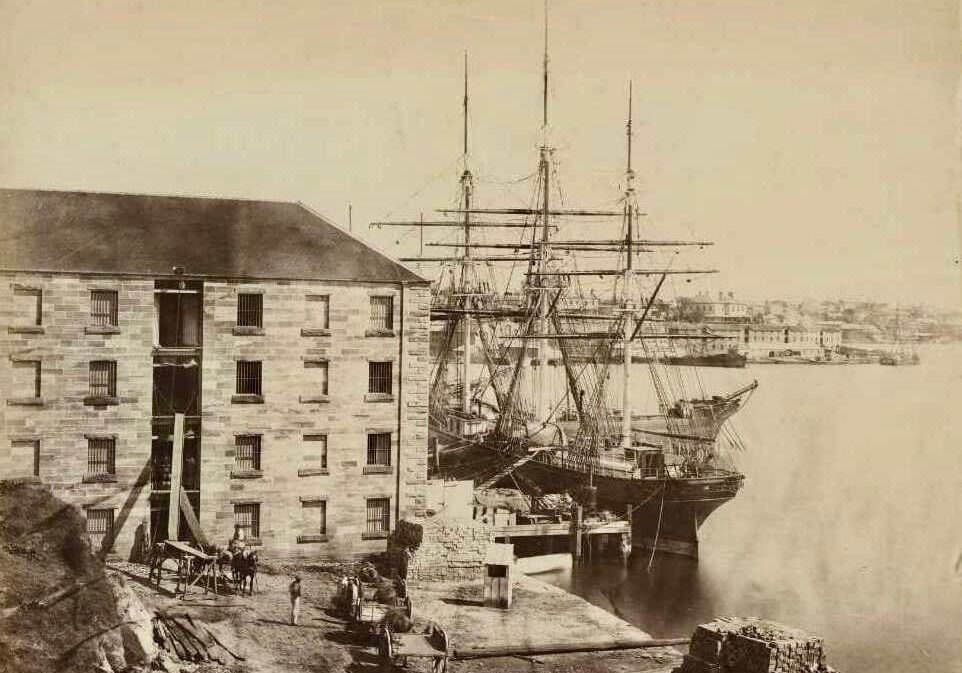Waterfront photography

Since photography became popular in the late 1800s, our picturesque waterfront has been a popular location for cameramen—and it appears in the background of many images taken from the lower north shore.
Some of the earliest photographs of this locality were 1860s panoramas (sequences of glass slide images butted together), taken either looking north from the slopes of Observatory Hill or looking south-west from high ground above Lavender Bay or McMahons Point on Sydney’s north shore.
Millers Point 1850–1900
Commercial photography emerged in Sydney during the 1850s and 1860s with leading professionals including the Freeman brothers, William Hetzer, Thomas Glaister and Edwin Dalton working with portable stereographic cameras and wet-emulsion (collodion) processes to produce single or double images on glass slides. Later photographers included Bernard Holtermann, Charles Bayliss, Charles Kerry and John Paine, who worked with wet plate and dry gelatin emulsions, and with the earliest celluloid films and gelatin silver printing papers.
The Freeman brothers and Holtermann and Bayliss produced panoramic overviews of the Millers Point headland—published in the 1860s and 1870s. Holtermann and Bayliss took their south-facing photographs from a purpose-built tower in Holtermann’s back yard above Lavender Bay, while the Freeman brothers took their north-facing panoramas from the north slopes of Flagstaff/Observatory Hill. Many other photographs of the area are unattributed, but some postcard scenes of ships docked in the bay might have been produced by Charles Kerry.
Rats and renewals 1901–1950
After the rat plague was declared in 1900, the NSW Public Works Department commissioned extensive archival photography of infested structures and areas in the Rocks and Millers Point—before and during its comprehensive cleaning, land-resumptions, demolitions and redevelopment program. Most of these photos (unattributed) are held now by State Archives and Records and the State Library of NSW.
Most early 20th century photographers of Walsh Bay remain anonymous, but some outstanding images were produced by Harold Cazneaux and Samuel J. Hood between the 1910s and the Second World War.
Modern transitions 1951–2000
Walsh Bay’s last decade as an internationally crucial port was the 1950s—before the state government built larger wharves at Circular Quay (for cruise liners) and Port Botany (for container ships); and the airport at Mascot; all during the 1960s. Excellent aerial images of this phase of vitality were captured by Frank Hurley, an internationally legendary photographer, filmmaker and adventurer.
While the wharves were being abandoned during the 1970s, photographer Wesley (Wes) Stacey took a new series of more poignant photographs; showing dockworkers playing cards in the sun on a wharf’s edge, the obsolete structures inside huge empty sheds, and eerie lantern effects through clerestorey windows at night.
During the 1980s, architectural photographers Max Dupain, Richard Glover and Michael Nicholson produced artistic views of the derelict structures of Walsh Bay before its redevelopment began in the 1990s. These prints have been publicly exhibited at museums and galleries.
Transformations since 2000
During and after the Mirvac-Transfield redevelopment of Walsh Bay, various architectural photographers were commissioned to record the derelict structures, then the restoration and building works, and finally all the new real estate which was sold (as leaseholds) during the early to mid-2000s.
More details
Alan Davies and Peter Stanbury with Con Tanre, 1985, The Mechanical Eye in Australia: Photography 1841–1900. Melbourne: Oxford University Press.



![ships at WB jetties 1872 ANMM ANMS1096[132] grab](https://walshbayhistory.net/wp-content/uploads/2018/08/ships-at-WB-jetties-1872-ANMM-ANMS1096132-grab-838x587.jpg)

































